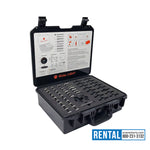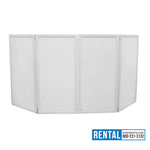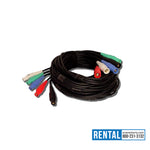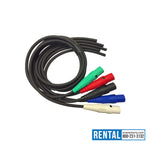You have no items in your shopping cart.
Every event is unique, requiring specific setups to create the perfect experience for attendees. One of the most impactful ways to achieve this is through custom-fit staging. By tailoring stage design and construction to the event’s needs, organizers can ensure optimal functionality, aesthetics, and audience engagement. Whether it’s a corporate seminar, a wedding, or a music festival, custom-fit staging provides the flexibility and personalization needed to make every event a success.
Why Choose Custom-Fit Staging?
Standard staging solutions may not always align with the distinct requirements of an event. Opting for custom-fit staging brings several benefits:
1. Perfect Alignment with Event Goals
Custom stages are designed with the event’s objectives in mind, ensuring that the layout, size, and features complement the purpose and theme.
2. Enhanced Aesthetics
Tailored staging solutions allow for creative freedom, enabling organizers to incorporate elements that enhance the visual appeal and align with the event’s branding or theme.
3. Optimized Space Utilization
Custom-fit stages make the most of the available venue space, ensuring every square foot is used effectively without compromising safety or functionality.
4. Improved Audience Experience
A stage tailored to the event ensures better visibility, acoustics, and accessibility, resulting in a more engaging experience for the audience.
5. Professional Presentation
Custom stages exude professionalism, elevating the event’s overall impression and leaving a lasting impact on attendees.
Key Features of Custom-Fit Staging
When designing custom-fit staging, several elements come into play to ensure the stage meets specific requirements:
1. Modular Components
Custom stages often use modular parts, allowing for flexibility in configuration and easy adjustments to accommodate various event needs.
2. High-Quality Materials
Durable and visually appealing materials, such as polished wood, aluminum, or steel, are commonly used to create a sturdy and attractive stage.
3. Personalized Finishes
From branded logos to thematic decor, custom finishes can transform a stage into a centerpiece that aligns with the event’s identity.
4. Advanced Features
Incorporate features such as integrated lighting, sound systems, or projection mapping to enhance the stage’s functionality and impact.
5. Accessibility Options
Include ramps, stairs, or lifts to ensure the stage is accessible to all participants, adhering to inclusivity standards.
Applications of Custom-Fit Staging
The versatility of custom-fit staging makes it ideal for a wide range of events:
Corporate Events
From product launches to shareholder meetings, a custom stage ensures a professional environment that aligns with the company’s brand and objectives.
Weddings and Celebrations
Create a stunning focal point for ceremonies, speeches, and performances by tailoring the stage to fit the couple’s vision and venue.
Concerts and Performances
Enhance the performer’s presence and audience engagement with a stage designed for optimal acoustics, lighting, and visibility.
Trade Shows and Exhibitions
A custom stage serves as a platform to showcase products, services, or ideas, drawing attention and leaving a memorable impression on attendees.
Steps to Designing Custom-Fit Staging
Creating the perfect custom stage involves a collaborative process between event organizers and staging professionals. Here’s how to approach it:
1. Define Event Requirements
Outline the purpose, theme, and logistics of the event. Consider factors such as the number of participants, venue dimensions, and technical needs.
2. Collaborate with Experts
Work with experienced staging professionals who can bring your vision to life. Their expertise ensures a balance of creativity, functionality, and safety.
3. Choose the Right Materials
Select materials that suit the event’s aesthetic and practical needs, ensuring durability and a polished appearance.
4. Incorporate Innovative Features
Leverage technology to add interactive or dynamic elements, such as LED displays, moving platforms, or augmented reality integrations.
5. Test and Refine
Before the event, conduct thorough testing to identify and resolve any issues. Ensure the stage is stable, visually appealing, and fully functional.
Sustainability in Custom-Fit Staging
As sustainability becomes a priority in event planning, custom-fit staging can align with eco-friendly practices:
1. Reusable Designs
Modular and adaptable components can be repurposed for future events, reducing waste and costs.
2. Sustainable Materials
Choose materials like bamboo, recycled aluminum, or FSC-certified wood to minimize environmental impact.
3. Energy-Efficient Features
Incorporate LED lighting and solar-powered elements to reduce energy consumption during the event.
Conclusion
Custom-fit staging offers unparalleled flexibility and creativity, enabling event organizers to design stages that resonate with their audience and achieve their goals. By focusing on tailored solutions, events can stand out, delivering a seamless and memorable experience for all involved. Whether it’s a grand corporate gala or an intimate wedding celebration, custom staging is the key to elevating any event to extraordinary heights.





